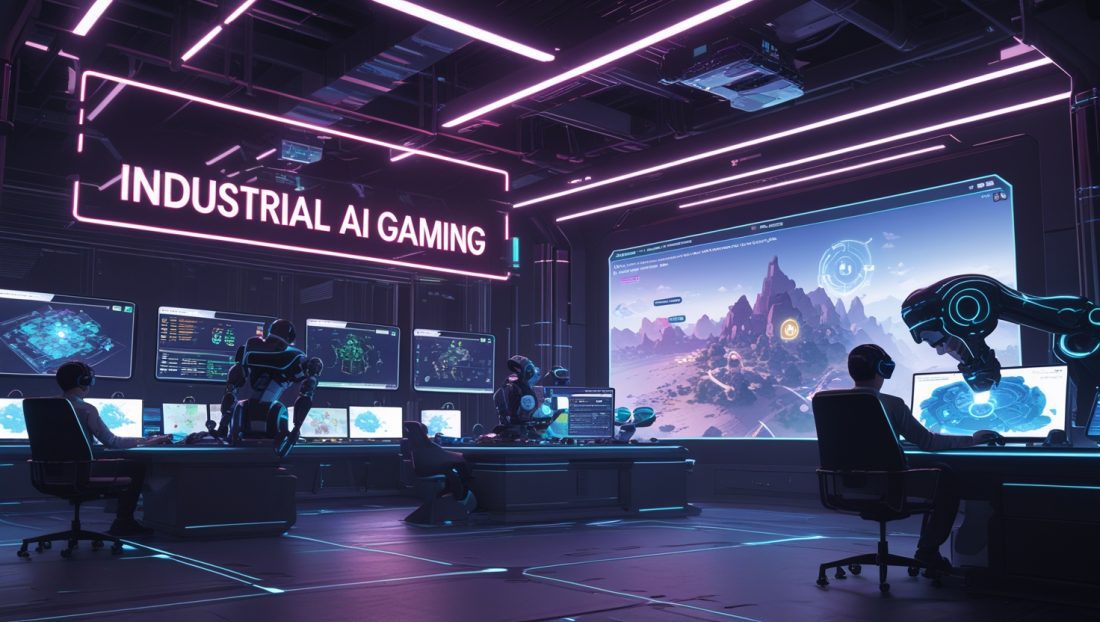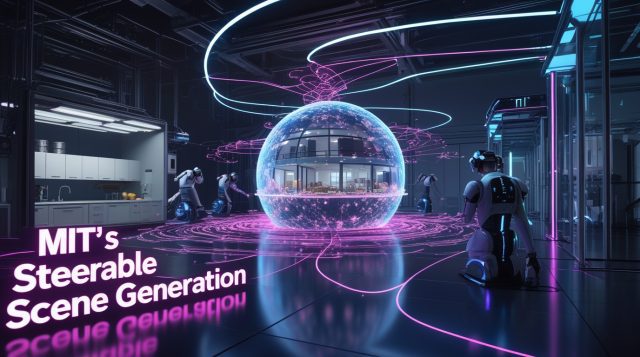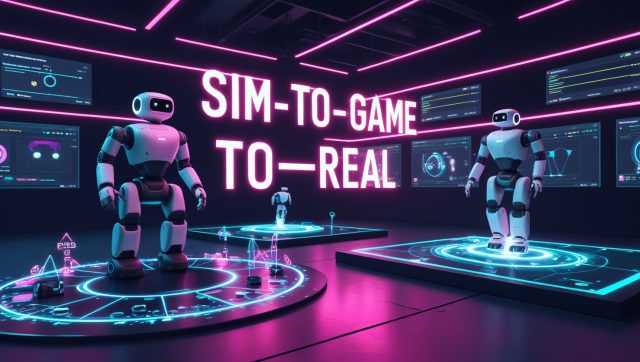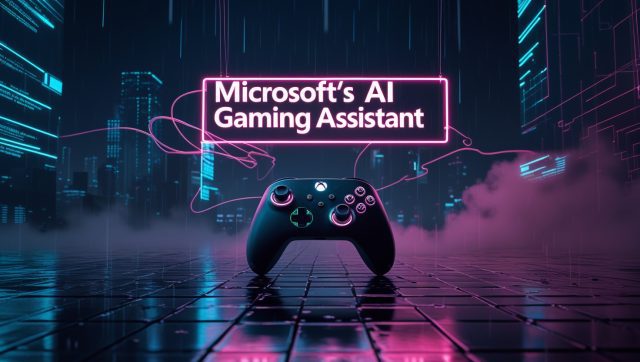“We’re no longer coding static worlds; we’re cultivating ecosystems that breathe.”
— Dr. Raia Hadsell, Research Scientist at DeepMind, on AI’s transformative role in gaming
It’s 2025, and you’re immersed in Farcana, a third-person shooter where enemy squads flank you with terrifying precision. These aren’t scripted bots—they’re AI “twins” trained on your playstyle, evolving in real-time. A silent revolution is reshaping the gaming industry. Industrial AI—the systematic integration of machine learning, neural networks, and data analytics into game development pipelines—is rebuilding the industry’s DNA from the ground up.
Why Industrial AI Gaming Matters Now
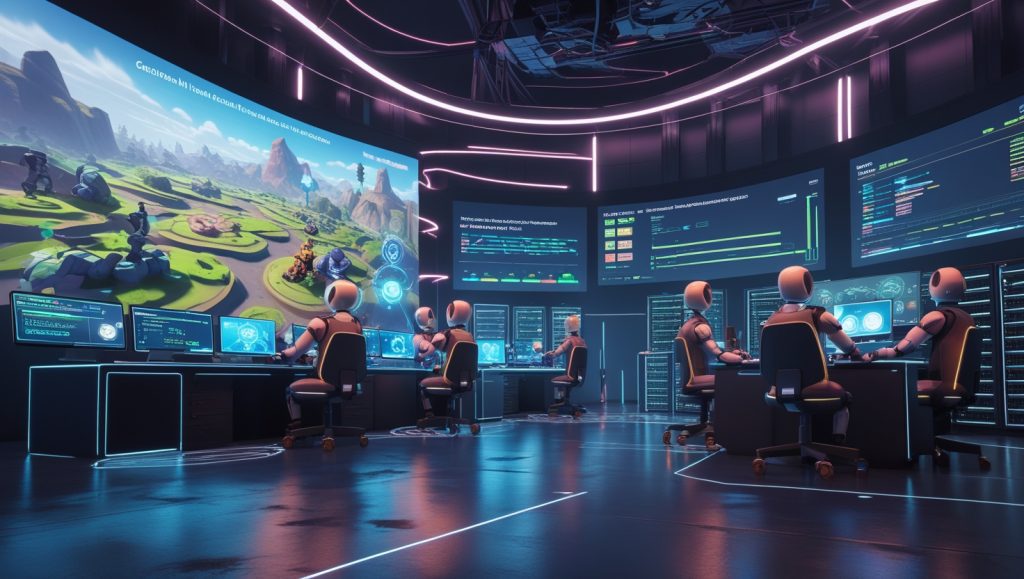
The gaming industry’s growth is staggering: $455 billion in global revenue in 2024, outpacing film and music combined. Yet studios face crushing pressures:
- AAA development costs exceeding $200 million per title
- Player demands for hyper-personalized, infinitely replayable worlds
- Fierce competition for attention in a market with 2.6 billion players
Industrial AI gaming addresses these challenges through architectural transformation. Unlike consumer-facing AI tools, it operates at the infrastructure level—optimizing workflows, generating content algorithmically, and creating adaptive systems at scale. Jack Buser of Google Cloud captures it perfectly: “AI-native games will dominate because they understand players in ways static code never could.”
1. The New Development Paradigm: AI as Co-Creator
Accelerating the Impossible
Industrial AI slashes development timelines previously thought immutable. At Neoverse Games, procedural content generation tools create environments 50% faster, while AI testing bots simulate thousands of playthroughs to identify bugs 10x faster than human QA teams. Minecraft’s infinite worlds now seem rudimentary next to 2025’s AI-generated ecosystems that evolve with player actions—forests that regrow after fires, cities that rebuild based on economic choices. For example, AI-driven automation in industrial settings mirrors how gaming AI streamlines asset creation, cutting costs and time.
These AI-driven game development tools leverage reinforcement learning to refine procedural generation, ensuring unique yet cohesive game worlds. A 2025 VentureBeat report explores how AI is reshaping game development, with studios increasingly automating tasks like terrain design. This shift not only reduces manual workload but also frees up creative teams to deepen narrative elements and elevate player immersion.
Democratizing AAA Quality
Generative AI tools like Scenario and Midjourney enable indie studios to compete with giants. Over 50% of game assets are now AI-generated, boosting productivity by 40%. Synthetic voice actors reduce recording costs by 70%, while AI rigging creates lifelike motion from minimal mocap data. Visionary Games leveraged this to overcome resource constraints. Their AI-assisted framework, inspired by multimodal robotic systems, automated asset creation and animation rigging, compressing production cycles by 30% and allowing a 250-person team to deliver visuals rivaling AAA studios.
2. Player Experience: The Illusion of Life, Perfected
Hyper-Personalized Worlds
Industrial AI moves beyond cosmetic customization:
- StoryCraft Studios’ narrative engine modifies plotlines based on player decisions, increasing immersion by 50%
- FIFA 2025’s AI analyzes play patterns to adjust opponent tactics in real-time—defenders memorize your wing runs and adapt formations to counter them
- DynamicPlay Studios’ adaptive difficulty system increased retention by 30% by tailoring challenges to individual skill curves
This level of personalization mirrors advancements in AI-driven predictive maintenance, where systems anticipate needs to optimize outcomes.
The NPC Revolution
Gone are robotic non-player characters. Inworld’s platform enables NPCs with memory and emotional consistency. A shopkeeper recalls your past choices, altering quests accordingly. Natural language processing allows unscripted conversations—no dialogue trees needed. As The Last of Us Part II demonstrated, enemies coordinate, flank, and adapt based on player behavior. For deeper insight into NPC behavior optimization, AI-driven robotic training shows how machine learning refines adaptive systems, much like NPCs learning from player interactions.
Advanced NPC behavior optimization relies on large language models to simulate emotional intelligence, making characters feel alive. A 2025 IGN report highlights how leading game developers are integrating AI to create non-playable characters (NPCs) that respond dynamically to player dialogue. This innovation is transforming gameplay by fostering more natural, human-like interactions and significantly boosting player engagement.
3. Monetization & Operations: The Invisible Economy
Data-Driven Player Value
Industrial AI transforms business models:
- Predictive LTV models segment players by engagement potential, yielding 20% higher ROI on user acquisition
- Dizzaract Games pioneered dynamic pricing where item costs adjust to real-world inflation rates
- Klarna’s AI customer service handles 2/3 of inquiries (equivalent to 700 agents) with 85% satisfaction
This mirrors how AI-powered retail transformation optimizes customer interactions for efficiency and personalization.
Beyond Microtransactions
High-value players receive bespoke AI-generated content. Direct-to-consumer platforms like Xsolla bypass app store fees, achieving 60% conversion rates. Blockchain marketplaces enable true asset ownership—Farcana players trade AI-generated skins across games, a concept aligned with blockchain-verified systems ensuring authenticity and value.
4. Ethical Minefields: The Cost of Intelligence
Privacy & Exploitation
Industrial AI’s power introduces unprecedented risks:
- Games track micro-behaviors (button presses, hesitation times, voice tone), creating exploitable psychographic profiles
- AI-driven difficulty curves maximize engagement, raising addiction concerns
- Network latency in cloud gaming threatens real-time AI responsiveness
These ethical challenges echo concerns in AI ethics frameworks, where unchecked data use can erode trust.
The risk of AI-driven behavioral manipulation in gaming parallels broader AI ethics debates.According to a 2025 TechCrunch report, AI companies are increasingly leveraging proprietary behavioral data to personalize user experiences. Yet, a significant portion of users remains unaware of how their data is used, sparking growing demand for greater transparency. As a result, regulators are considering stricter guidelines to protect users and prevent potential exploitation.
Creative Integrity & Labor Shifts
Over-reliance on procedural generation risks homogenized worlds lacking handcrafted detail. 45% of routine tasks (testing, asset creation) are automated, forcing developers toward AI-augmented roles. Ilman Shazhaev, CEO of Dizzaract, argues: “Artists using AI will replace those who don’t.” This shift is evident in AI-augmented manufacturing roles, where automation redefines labor dynamics.
5. The 2025 Competitive Landscape
- Ubisoft: Ghostwriter AI generates NPC dialogue for Assassin’s Creed Nexus
- NVIDIA: Built Europe’s first industrial AI cloud with 10,000 GPUs for real-time simulation
- Tencent: Investing heavily in generative AI for emerging-market mobile games
- Sony: Integrating AI physics engines for hyper-realistic aerodynamics in Gran Turismo 8
These advancements build on trends like AI-driven model optimization, which enhances efficiency across industries.
The Future: 2026+ Industrial AI Gaming Frontiers
- Self-Evolving Games: Titles that rewrite quests post-launch using collective player behavior
- Neural Interfaces: AI adapting gameplay to biometric data (heart rate, eye movement)
- Quantum AI: Solving complex simulation problems impossible on classical hardware
- AI Game Factories: NVIDIA’s blueprint for scalable AI development hubs
- Regulatory Frameworks: Expected EU/US legislation on behavioral data usage by 2026
These frontiers align with innovations like quantum machine learning in robotics, pushing boundaries in decision-making and simulation.
The Silent Engine Roars
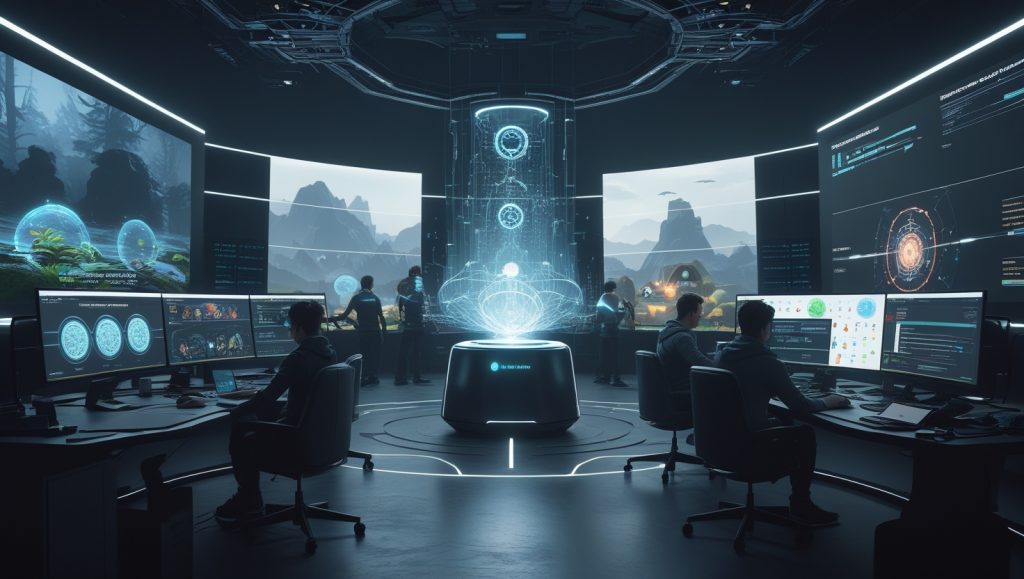
Industrial AI gaming isn’t about flashy chatbots. It’s the infrastructure reshaping gaming’s economics, creativity, and scale. By 2027, AI will drive 80% of development workflows—not as a novelty, but as the backbone of a half-trillion-dollar industry. Studios like Neoverse, Dizzaract, and Ubisoft understand this truth: AI amplifies human creativity. As Columbia Engineering’s AI program emphasizes, the next frontier is “machines that anticipate creative intention.”
The revolution isn’t coming. It’s already rendering.
FAQ: Industrial AI Gaming Explained
Will AI replace game developers?
No. AI handles repetitive tasks (testing, asset generation), freeing developers for high-level design. Human creativity remains essential for storytelling and emotional depth.
How does AI improve multiplayer fairness?
Machine learning algorithms analyze skill levels to create balanced matchups. AI anti-cheat systems detect anomalies in real-time, banning hackers mid-match.
Can indie studios afford industrial AI tools?
Yes. Cloud-based AI services (Google’s Vertex AI, NVIDIA Omniverse) offer subscription models. Generative tools like Scenario enable small teams to produce AAA-quality assets.
What’s the #1 ethical concern with gaming AI?
Behavioral manipulation. Adaptive difficulty and personalized rewards could exploit psychological vulnerabilities. The EU’s proposed AI Act (2026) may regulate these systems.
Explore AI’s Expanding Role
Subscribe to our Future Trends newsletter for weekly analysis on AI gaming advancements, exclusive case studies, and regulatory updates.
